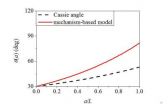(Press-News.org) Implementation of the Affordable Care Act – now assured by the re-election of President Obama – is expected to result in up to 50 million currently uninsured Americans acquiring some type of health insurance coverage. But a study by researchers at the Mongan Institute for Health Policy at Massachusetts General Hospital (MGH) finds that a significant percentage of the primary care physicians most likely to care for newly insured patients may be not be accepting new patients. The investigators note that strategies designed to increase and support these "safety-net" physicians could help ensure that newly covered patients have access to primary care.
"This study raises very serious concerns about the willingness and ability of primary care providers to cope with the increased demand for services that will result from the ACA," says Eric G. Campbell, PhD, of the Mongan Institute, senior author of the report to be published in the American Journal of Medical Quality. "Even with insurance, it appears that many patients may find it challenging to find a physician to provide them with primary care services."
In 2000 the Institute of Medicine published a report on the health care "safety net" – physicians and organizations caring for a significant proportion of uninsured or Medicaid-covered patients – that noted a lack of enough safety-net providers and the chronic underfunding of Medicaid. The Affordable Care Act was designed to ensure almost universal health insurance coverage, including expanding the number of individuals eligible for Medicaid. The authors of the current study note that many newly covered patients are likely to turn to physicians in the already-stressed health care safety net and that areas where such patients are likely to live often have limited primary care services. In addition, studies have suggested that physicians caring for disadvantaged groups of patients may provide lower-quality care.
The authors set out to better understand the physicians in the primary care safety net, to determine their willingness to accept new Medicaid patients and to assess their attitudes about and interest in quality improvement activities. As part of a 2009 survey of medical professionalism, physicians were asked to indicate the approximate percentage of their patients who were covered by Medicaid or were uninsured and unable to pay. They also were asked whether they were accepting new Medicaid or uninsured patients, along with several questions regarding services they provided to vulnerable populations and their attitudes towards and participation in quality improvement activities. Because of their focus on the primary care safety net, the investigators restricted their analysis to responses from internists, pediatricians and family practitioners.
Of 840 primary care physicians responding to the survey, 53 percent were safety-net providers, defined as having patient panels with more than 20 percent uninsured or Medicaid patients. Half of all responding primary care physicians indicated they were accepting new patients who either were covered by Medicaid or had no means of paying for their care. But safety-net physicians were considerably more likely to accept both patient groups, with 72 percent taking new Medicaid patients and 61 percent taking new patients with no medical coverage. There were no significant differences between the physician groups in reported attitudes about or participation in quality improvement efforts, and safety-net physicians reported greater awareness of and efforts to address disparities in health care than did non-safety-net physicians.
The authors note that the concentration of care for Medicaid and uninsured patients among a limited number of safety-net physicians and the fact that 28 and 39 percent, respectively, of those physicians are not accepting new Medicaid and uninsured patients indicate that the current health care safety net may have reached its capacity. In addition, they note, safety-net physicians' interest in quality improvement and attention to health care disparities suggests that reported differences in the quality of care they provide probably reflect limited resources available to their practices or barriers to care within the local communities.
"We found the attitudes of safety-net primary care physicians are consistent with providing equitable, universal care, and they were almost twice as likely to look out for possible racial and ethnic disparities within their practices," says Lenny López, MD, MPH, MDiv, of the Mongan Institute, corresponding author of the report. "We're already aware of the need for more primary care physicians, and these results make it apparent that the need for safety-net PCPs is even more critical. We also found that safety-net physicians were more likely to be women, under-represented minorities or foreign medical graduates, so efforts to bring more such physicians into primary care, along with efforts to close the income gap between safety-net and non-safety-net PCPs, could help expand the safety net."
López is an assistant professor and Campbell an associate professor of Medicine at Harvard Medical School. Additional co-authors of the study, which was support by the Institute on Medicine as a Profession, are Christine Vogeli, PhD, and Lisa Iezzoni, MD, Mongan Institute of Health Policy at MGH; Catherine DesRoches, PhD, Mathematica Policy Research, Princeton, N.J.; and Richard Grant, MD, Kaiser Permanente Northern California.
INFORMATION:
Massachusetts General Hospital, founded in 1811, is the original and largest teaching hospital of Harvard Medical School. The MGH conducts the largest hospital-based research program in the United States, with an annual research budget of more than $750 million and major research centers in AIDS, cardiovascular research, cancer, computational and integrative biology, cutaneous biology, human genetics, medical imaging, neurodegenerative disorders, regenerative medicine, reproductive biology, systems biology, transplantation biology and photomedicine. In July 2012, MGH moved into the number one spot on the 2012-13 U.S. News & World Report list of "America's Best Hospitals."
END
Shedding light on the limits of life in extreme environments, scientists have discovered abundant and diverse metabolically active bacteria in the brine of an Antarctic lake sealed under more than 65 feet of ice.
The finding, described in this week's issue of the Proceedings of the National Academy of Sciences, is surprising because previous studies indicate that the brine has been isolated from the surface environment -- and external sources of energy -- for at least 2,800 years, according to two of the report's authors, Peter Doran and Fabien Kenig, both professors ...
You could call this "Pac-Man, the Sequel." Scientists with NASA's Cassini mission have spotted a second feature shaped like the 1980s video game icon in the Saturn system, this time on the moon Tethys. (The first was found on Mimas in 2010). The pattern appears in thermal data obtained by Cassini's composite infrared spectrometer, with warmer areas making up the Pac-Man shape.
"Finding a second Pac-Man in the Saturn system tells us that the processes creating these Pac-Men are more widespread than previously thought," said Carly Howett, the lead author of a paper recently ...
The twenty-sixth tropical cyclone of the western North Pacific Ocean season formed and has some areas of heavy rain, according to data from NASA's TRMM satellite. Tropical Depression 26W is threatening islands within Micronesia and warnings and watches are currently in effect.
Micronesia is a region in the western North Pacific Ocean made up of thousands of small islands. West of the region is the Philippines, while Indonesia is located to the southwest.
NASA's Tropical Rainfall Measuring Mission (TRMM) satellite passed over Tropical Depression 26W on Nov. 26 at 0526 ...
CHICAGO – The radiation dose to areas of the body near the breast during mammography is negligible, or very low, and does not result in an increased risk of cancer, according to a study presented today at the annual meeting of the Radiological Society of North America (RSNA). The results suggest that the use of thyroid shields during mammography is unnecessary.
"Thyroid shields can impede good mammographic quality and, therefore, are not recommended during mammography," said Alison L. Chetlen, D.O., assistant professor of radiology at Penn State Hershey Medical Center.
During ...
CHICAGO – Radiologists in Toronto have begun to identify a pattern of injuries that may be indicative of elder abuse, according to a study presented today at the annual meeting of the Radiological Society of North America (RSNA).
According to lead researcher Kieran J. Murphy, M.D., F.R.C.P.C., F.S.I.R., interim radiologist-in-chief at University Health Network in Toronto, Canada, only 2 percent of physical elder abuse is reported by clinicians.
"Unlike cases of child abuse, there is very little information available on this subject," Dr. Murphy said. "It's a much ...
CHICAGO – Researchers reviewing the records of approximately 250,000 women enrolled in an integrated healthcare delivery system found that increased CT utilization between 2000 and 2010 could result in an increase in the risk of breast cancer for certain women, including younger patients and those who received repeat exams. According to the study, which was presented today at the annual meeting of the Radiological Society of North America (RSNA), nuclear medicine examinations may also contribute to increased breast cancer risk.
CT uses ionizing radiation in the form ...
CHICAGO – A survey of women undergoing routine screening mammography found that many of them would be interested in pursuing additional screening tests if notified they had dense breast tissue, despite the possibility of false positives, invasive procedures, and out-of-pocket costs, according to a study presented today at the annual meeting of the Radiological Society of North America (RSNA).
"Our study highlights the need for patient education regarding breast density," said Jafi Lipson, M.D., assistant professor of radiology at Stanford University School of Medicine ...
CHICAGO – Researchers assessing the impact of revised guidelines for screening mammography issued by the U.S. Preventive Services Task Force (USPSTF) found evidence that the new recommendations may lead to missed cancers and a decline in screening, according to two studies presented today at the annual meeting of the Radiological Society of North America (RSNA).
Routine screening mammography has traditionally been recommended by both the USPSTF and the American Cancer Society for all women over the age of 40. In 2009, the USPSTF issued controversial new guidelines recommending ...
CHICAGO – Chemotherapy can induce changes in the brain that may affect concentration and memory, according to a study presented today at the annual meeting of the Radiological Society of North America (RSNA). Using positron emission tomography combined with computed tomography (PET/CT), researchers were able to detect physiological evidence of chemo brain, a common side effect in patients undergoing chemotherapy for cancer treatment.
"The chemo brain phenomenon is described as 'mental fog' and 'loss of coping skills' by patients who receive chemotherapy," said Rachel ...
The wetting model is a classical problem in surface science and biomimetic science. Professor LIU Jianlin and his collaborators from China University of Petroleum, Wuhan University and Fourth Military Medical University approached this old and classical problem from a new direction. They stressed that it is the triple contact line and not the contact area of the droplet/solid interface that determines the macroscopic contact angle. The proposed continuum model, termed the mechanism-based model, can illustrate the contact line pinning effect at some wedges or phase interfaces ...

